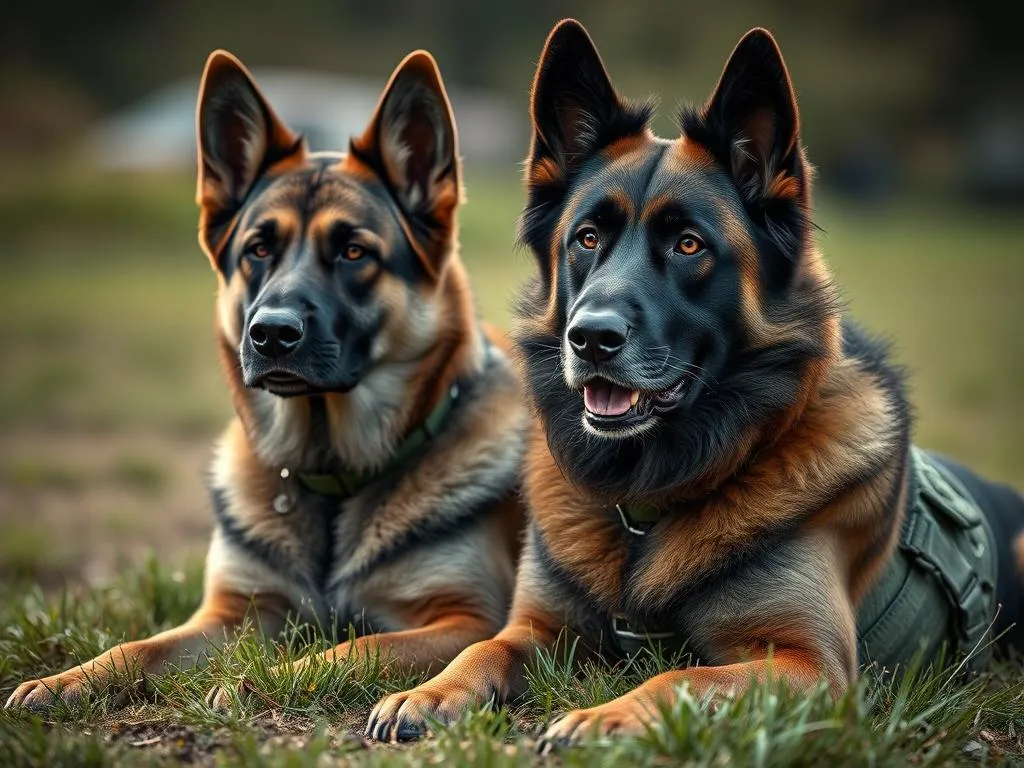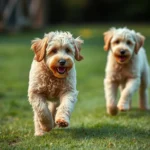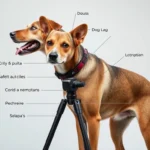
Throughout history, dogs have been invaluable partners to humans, serving in various capacities, including warfare. Their loyalty, intelligence, and keen senses have made them essential in military operations. From ancient battles to contemporary conflicts, popular and famous military dogs have showcased extraordinary bravery and skill, often forming unbreakable bonds with their handlers. This article explores the remarkable contributions of these canine heroes, highlighting their history, roles, and the unique breeds that serve in the military today.
Historical Context of Military Dogs
Early Use of Dogs in Warfare
The use of dogs for military purposes dates back to ancient civilizations. Various cultures recognized the potential of canines in battle, utilizing them as companions, protectors, and even as weapons. For example, the ancient Greeks and Romans trained dogs to accompany soldiers into battle, while the Assyrians and Egyptians kept large breeds for defense.
Some of the earliest military breeds included the Molosser-type dogs, known for their strength and loyalty. These dogs were often used to guard camps, patrol borders, and assist in combat, laying the groundwork for the future roles of military dogs.
Evolution of Military Working Dogs
As warfare evolved, so did the roles of military dogs. Over the centuries, their functions expanded beyond just combat support. In World War I, dogs served as messengers, carrying crucial communications between units. By World War II, they were trained for specific tasks, such as scouting, detecting explosives, and providing companionship to soldiers.
Each conflict brought new challenges, leading to the introduction of specialized breeds designed for various tasks. The versatility of these dogs allowed them to adapt to changing warfare techniques, solidifying their place in military history.
Recognition and Training
The selection and training of military dogs are rigorous processes aimed at ensuring these animals can perform under pressure. Typically, dogs are chosen based on their temperament, intelligence, and physical abilities. Breeds such as German Shepherds, Belgian Malinois, and Labrador Retrievers are commonly used due to their trainability and strong work ethic.
Military dog training programs focus on obedience, scent detection, and tactical operations. Handlers work closely with their dogs to establish a bond built on trust and respect, which is crucial for successful missions.
Notable Military Dogs Throughout History
Famous World War I Dogs
World War I saw several remarkable dogs that made significant contributions. One of the most celebrated is Sergeant Stubby, a stray who became the most decorated dog of the war. Stubby served with the 102nd Infantry Regiment, participating in 17 battles and saving many lives by alerting soldiers to incoming artillery fire.
Another notable canine hero from this era is Rags, a mixed-breed dog who served with the 1st Infantry Division. Rags was not only a mascot but also played a crucial role in delivering messages between troops, showcasing the vital communication support military dogs provided during the war.
Famous World War II Dogs
World War II introduced even more famous military dogs, including Chips, a German Shepherd-Collie-Siberian Husky mix. Chips served with the U.S. Army and was awarded the Silver Star for his bravery in the Italian campaign, where he helped capture enemy soldiers and protect his unit.
Another notable dog was Sergeant Stubby II, a direct descendant of the famous Sergeant Stubby. He served during WWII, participating in various operations and continuing the legacy of heroism and service exemplified by his ancestor.
Modern Military Dogs
In recent conflicts, the role of military dogs has continued to evolve. One of the most well-known modern military dogs is Cairo, a Belgian Malinois who served in the Navy SEALs. Cairo was part of the operation that resulted in the death of Osama bin Laden, showcasing the critical role these dogs play in high-stakes missions.
These modern military dogs undergo extensive training for roles such as detection and patrol, proving that their contributions remain essential in today’s military operations.
Roles and Functions of Military Dogs
Detection and Search Operations
One of the primary roles of military dogs is in detection and search operations. Trained to detect explosives and narcotics, these dogs are invaluable in ensuring the safety of troops and civilians. Their keen sense of smell allows them to identify threats that humans might overlook.
For instance, military dogs have successfully alerted their handlers to hidden explosives in various combat zones, preventing potentially deadly situations. Their ability to work under extreme conditions makes them indispensable in the field.
Search and Rescue Missions
Military dogs also play a crucial role in search and rescue missions. They are trained to locate missing personnel, often in challenging environments. Dogs have been instrumental in finding lost soldiers or civilians, showcasing their remarkable tracking abilities.
Notable rescue missions involving military dogs include efforts after natural disasters, where they have located survivors trapped under rubble. These heroic actions highlight the life-saving capabilities of military dogs in critical situations.
Patrol and Protection
Another vital function of military dogs is patrolling and protecting soldiers in the field. Their natural instincts and training allow them to detect threats and provide an extra layer of security for troops. Dogs can sense danger and alert their handlers, often before humans are aware of a potential threat.
There are numerous incidents where military dogs have displayed incredible bravery, such as leading soldiers through dangerous areas or engaging enemy combatants to protect their handlers. Their courage and loyalty are traits that make them exceptional partners in the field.
Most Popular Breeds Used as Military Dogs
German Shepherds
Among the most recognized military dog breeds is the German Shepherd. Known for their intelligence, versatility, and loyalty, these dogs have been a staple in military service for decades. Their characteristics make them ideal for various roles, including detection, patrol, and protection.
Famous German Shepherds in military service include Max, who served in the Vietnam War, and Chips, who is often noted for his bravery during WWII. Their contributions have solidified the German Shepherd’s reputation as one of the most popular and effective military dog breeds.
Belgian Malinois
The Belgian Malinois has become increasingly popular in modern military applications, particularly in special operations. Their agility, speed, and intelligence make them perfect for high-stakes missions. The breed is known for its ability to perform complex tasks and adapt quickly to various environments.
Notable examples of Belgian Malinois in service include Cairo, who was instrumental in the Navy SEALs’ operation to capture Osama bin Laden. The breed’s rising popularity is a testament to its effectiveness in contemporary military operations.
Labrador Retrievers
Labrador Retrievers are also commonly used in military operations, particularly in detection roles. Their friendly demeanor and keen sense of smell make them excellent candidates for bomb and drug detection missions. Labs have been successful in identifying hidden explosives, contributing to the safety of troops and civilians alike.
Success stories of Labs in military contexts include their service in various conflicts, where they have consistently demonstrated their capabilities in detection and search operations.
The Bond Between Military Dogs and Their Handlers
Training and Partnership
The relationship between military dogs and their handlers is crucial for successful missions. Training programs emphasize the importance of building a strong bond based on trust and communication. Handlers invest time in developing their dogs’ skills while also fostering a partnership that enhances performance in the field.
Handlers often rely on their dogs to interpret signals and cues, making this bond essential for effective teamwork. The emotional connection established during training results in a cohesive unit capable of tackling challenging situations.
Emotional Support and Companionship
Military dogs provide emotional support and companionship to soldiers, significantly benefiting their mental health. The presence of a dog can alleviate stress and anxiety, serving as a comforting presence during difficult times.
Many veterans share anecdotes about their experiences with military dogs, recounting how these animals provided solace and companionship during deployments. The bond formed between soldiers and their dogs often extends beyond service, leading to lifelong relationships.
Challenges Faced by Military Dogs and Handlers
Despite the strong bonds formed, military dogs and their handlers face numerous challenges, especially during deployment. The emotional toll of separation can be significant, both for the dogs and their handlers. Handlers must navigate the stress of combat while ensuring their dogs remain safe and effective in the field.
Post-service challenges also exist for both parties. Many retired military dogs require special care due to the physical and emotional stresses they endured during service. Handlers often face difficulties readjusting to civilian life after the intense experience of deployment with their canine partners.
Recognition and Honors for Military Dogs
Awards and Medals
Military dogs are often recognized for their bravery and service, receiving various awards and medals. Organizations have established specific honors for military dogs, acknowledging their critical contributions to military operations.
Notable recipients of military honors include Sergeant Stubby, who was awarded the title of “Most Decorated Dog” and received a special medal for his service. Such recognition raises awareness about the sacrifices made by these canine heroes.
Memorials and Tributes
Numerous memorials and tributes exist to honor military dogs and their contributions. These sites serve as reminders of the bravery and sacrifice of these animals, educating the public about their roles in military history.
Events commemorating military dogs often draw attention to their legacy, helping to foster appreciation for their service. Such tributes not only honor the dogs but also promote public awareness of the importance of military dog programs.
Conclusion
The significance of popular and famous military dogs cannot be overstated. From their historical roles in warfare to their contemporary contributions, these canine heroes have proven time and again their loyalty, bravery, and skill. As we reflect on their legacy and ongoing contributions, it is essential to recognize the bond between military dogs and their handlers, the challenges they face, and the recognition they deserve. Their stories of courage and service remind us of the profound impact these animals have had in the military and beyond.









